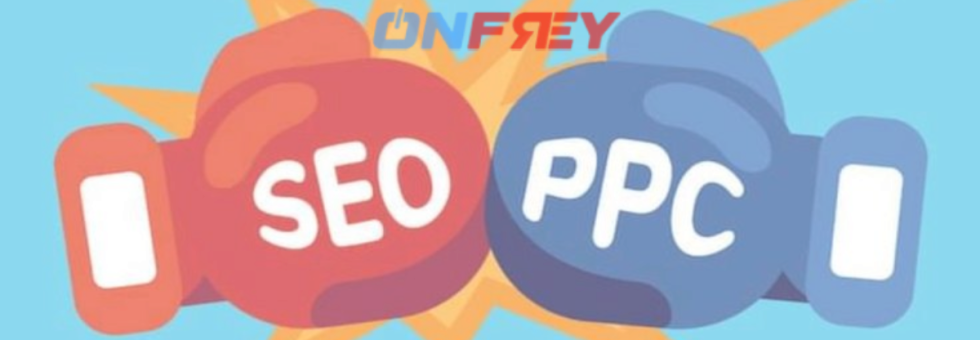When building your online presence, one common dilemma for business owners is deciding between Search Engine Optimization (SEO) and Paid Advertising. Both are powerful digital marketing tools that can increase website traffic and customer engagement, but which one should you prioritize?
Onfrey explores how SEO and Paid Ads work, their unique advantages and challenges, and how to choose the best strategy depending on your business goals—whether you’re running a local service, an online store, or a professional brand.
What is SEO?
Search Engine Optimization is the practice of enhancing your website so that it ranks higher in search engine results—without paying for ad placements. By optimizing your content, website structure, and performance, you can increase visibility to users actively searching for products or services like yours.
Unlike paid traffic, Search Engine Optimization generates organic visitors—people who find your site naturally through search engines like Google.
READ MORE:
Types of SEO and Their Advantages
Different SEO strategies address different goals. Here are the main categories:
- General SEO – A comprehensive strategy for improving your site’s overall ranking.
- On-Page SEO – Focuses on optimizing content, headlines, images, and meta tags.
- Technical SEO – Enhances backend elements like website speed, mobile compatibility, and crawlability.
- E-commerce SEO – Designed to improve visibility for product listings and categories.
- Local SEO – Ideal for targeting customers in a specific geographical area.
- Conversion Rate Optimization (CRO) – Focuses on turning website visitors into paying customers.
Why Choose SEO?
- Long-term results. Once your site starts ranking, it can maintain visibility with ongoing effort.
- Builds credibility and trust. Users tend to trust organic results more than ads.
- Cost-effective in the long run. You don’t pay for each click.
- Reaches people who are actively searching for your offerings.
Considerations:
SEO takes time to show results. It also requires regular updates and monitoring, and the level of competition can affect how fast you see growth.
What Are Paid Ads?
Paid Ads allow businesses to pay for immediate visibility on platforms like Google, Facebook, Instagram, LinkedIn, or YouTube. These ads appear based on user searches, demographics, or behavior, and you pay either per click or per impression.
It’s a fast way to generate traffic and can be incredibly effective when launching a new product or promoting time-sensitive offers.
Common Paid Ad Channels
- Google Ads – Search, Display, Shopping campaigns
- Facebook/Instagram Ads – Great for visual storytelling and audience targeting
- LinkedIn Ads – Ideal for B2B marketing and professional services
- YouTube Ads – Engaging video content for awareness and brand building
Why Use Paid Ads?
- Quick traffic generation for product launches, events, or sales
- Precision targeting based on demographics, location, interests, and behavior
- Real-time performance tracking and optimization
- Scalable based on your budget
Considerations:
Traffic stops once the budget is exhausted. It can become expensive, especially in competitive markets. Paid Ads also require active management to remain effective.
SEO vs. Paid Ads: A Head-to-Head Comparison

| Feature | SEO | Paid Ads |
|---|---|---|
| Cost | Long-term investment without paying per click | Ongoing budget required for clicks or impressions |
| Timeline | Gradual results over weeks or months | Immediate visibility once ads go live |
| Traffic | Organic, sustainable over time | Paid, short-term unless budget is maintained |
| Best Use | Long-term visibility and credibility | Short-term campaigns, launches, and promotions |
| Targeting | Keyword-focused, content-driven | Demographic, behavioral, and interest targeting |
| ROI | Improves over time with consistency | Immediate return based on budget and ad quality |
Insights from the Kenyan Market
Understanding local trends can help guide your strategy:
- 67% of online users in Kenya prefer clicking on organic search results rather than ads.
- Google Ads’ average click-through rate in Kenya is 3.2 percent, indicating strong visibility potential.
- 90% of businesses actively using SEO in Kenya report steady improvements in visibility.
- 46% of Google searches have local intent, making Local SEO essential for region-focused businesses.
What’s Right for Your Business?
If your aim is to build a long-lasting presence, reduce ad dependency over time, and enhance your brand’s credibility, SEO is a great investment.
If you’re running a limited-time offer, launching a new product, or need fast results, Paid Ads can deliver instant exposure.
Best approach: Many successful businesses combine both. Search Engine Optimization supports long-term growth, while Paid Ads provide a boost for specific campaigns or new customer acquisition.
How to Get Started
SEO Action Plan:
- Assess site speed and performance
- Research keywords and competitors
- Audit content and backlinks
Paid Ads Setup:
- Define campaign goals
- Set a clear budget
- Choose appropriate platforms and targeting options
- Monitor and optimize frequently
Recommended Tools
For SEO:
- Google Search Console
- Ubersuggest
- Yoast SEO or Rank Math
- WP Rocket (for speed optimization)
For Paid Ads:
- Google Ads
- Facebook Ads Manager
- LinkedIn Campaign Manager
- YouTube Ads
There is no universal answer to the Search Engine Optimization vs. Paid Ads debate. Your decision should align with your business goals, marketing timeline, and available resources. A thoughtful, strategic mix of both can lead to strong, sustainable growth and meaningful customer engagement.
- Need help on help to grow your business through targeted SEO , Paid Ad strategies, and expert digital consulting ?
visit Onfrey.com today.
tel:(254) 768644458 ,
Mail to: [email protected]

